A visit to the Cathedral of Malaga is an absolute must when you vacation in Andalusia. Built in the Renaissance architectural tradition, this stunning Roman Catholic church is one of Malaga’s most important attractions.
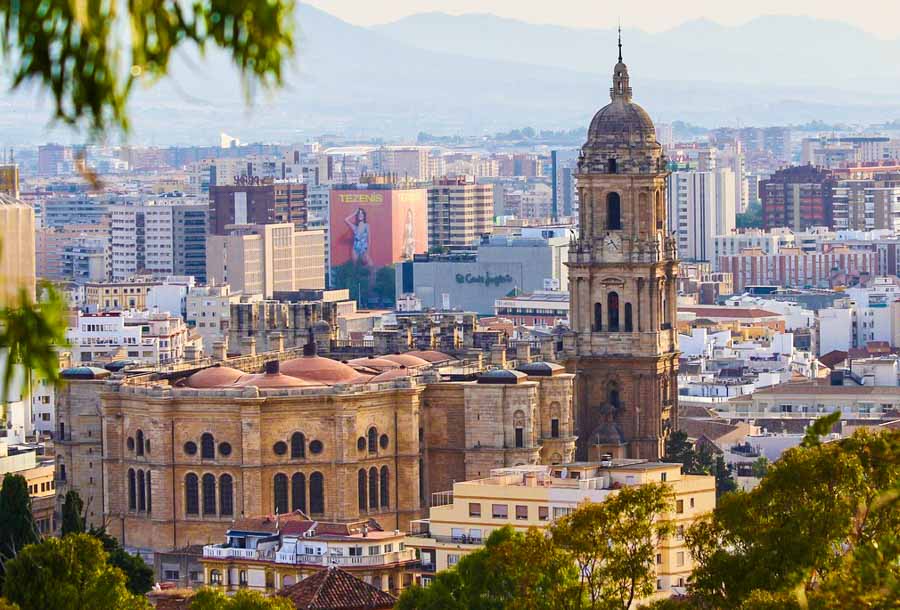
Now, if you’ve been traveling around Spain long enough, you probably came across quite a few incredible churches, like the Mesquita, or the Cathedral of Seville. Although Malaga’s Cathedral does not share the same fame, you’ll still be impressed by its beauty, grandeur and elegance.
Table of Contents
A Brief History of the Cathedral of Malaga
Like many other sacred buildings in Spain, the Cathedral of Malaga sits on the site of an old mosque. More precisely, the Aljama Mosque (the Great Mosque of Malaga). After the conquest of Málaga by los Reyes Católicos in 1487, the Muslim temples started being demolished and replace by Christian churches.
Initially, the Great Mosque suffered only minor alterations which allowed it to function as a Catholic church. But eventually the Christians demolished it completely and replaced it with what we know today as the Cathedral of Malaga. The only thing that remained from the mosque was the Patio de los Naranjos, a small courtyard of orange trees.

In 1622 the cathedral received the name of Santa María de la Encarnación, which is still its official name today.
The actual construction of the Malaga Cathedral began in 1528 and lasted for more than 200 years. The project was so costly that by 1782 the work had to be stopped, leaving the cathedral in an unfinished state. Only one of the two bell towers was completed, hence the Cathedral’s nickname – La Marquita (the One-Arm Lady.)
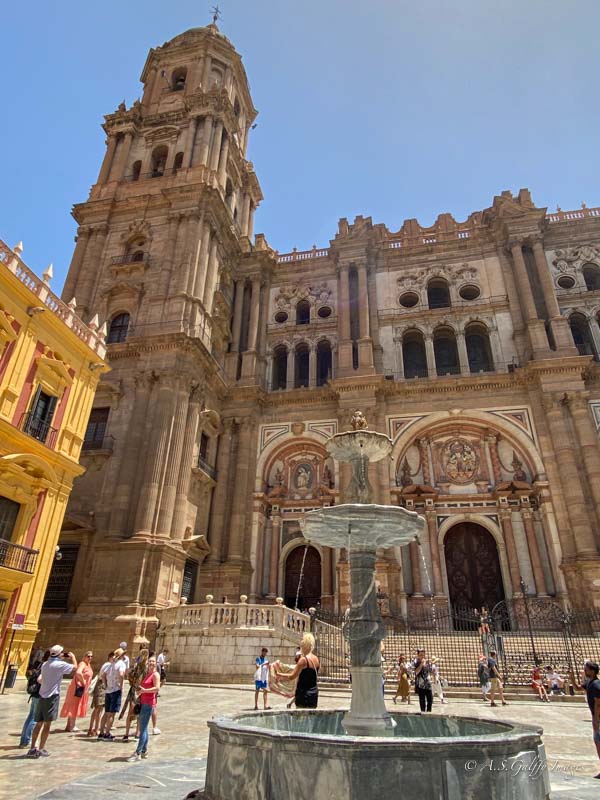
Although the Cathedral has never been finished in a proper sense, you don’t realize it unless you notice there is an “missing” tower. In the past 200 years there have been several attempts to complete it, but they were all unsuccessful. In time however, the absence of the second tower became a symbol of the Malaga Cathedral.
An Architectural Masterpiece
The Cathedral of Malaga was built on a plan designed by Diego de Siloe. But many experts believe the construction actually followed the plans of Enrique Egas, a master of the Old Gothic School.
The initial construction started in a Gothic style, which was the official style of the time, but it rapidly evolved into the Renaissance style you see today. There is still a Gothic doorway from that period, which is the sacristy door that leads into the gardens.
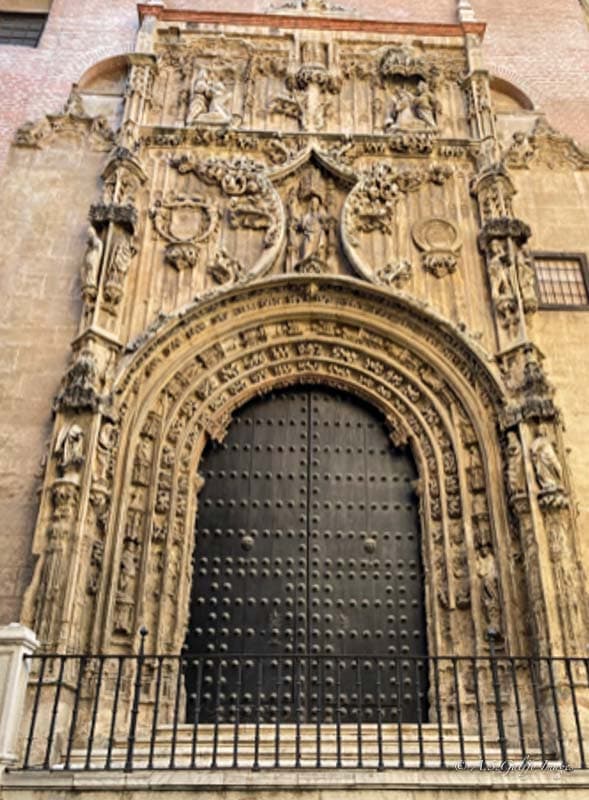
The Cathedral has four façades. The main façade has two levels and is in Baroque style, unlike the rest of the building. There is an imposing marble stairway that leads up to it. This used to be the main entrance of the church.
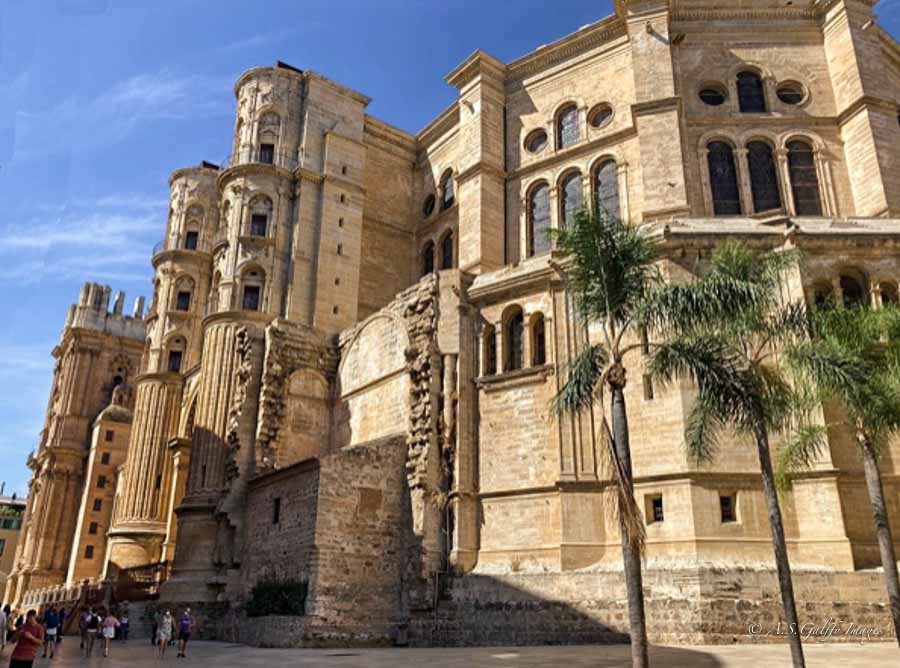
Today’s entrance is through Puerta de las Cadenas, on the north side. The door has two semicircular towers, called “cubillos,” which date back to the 18th century.
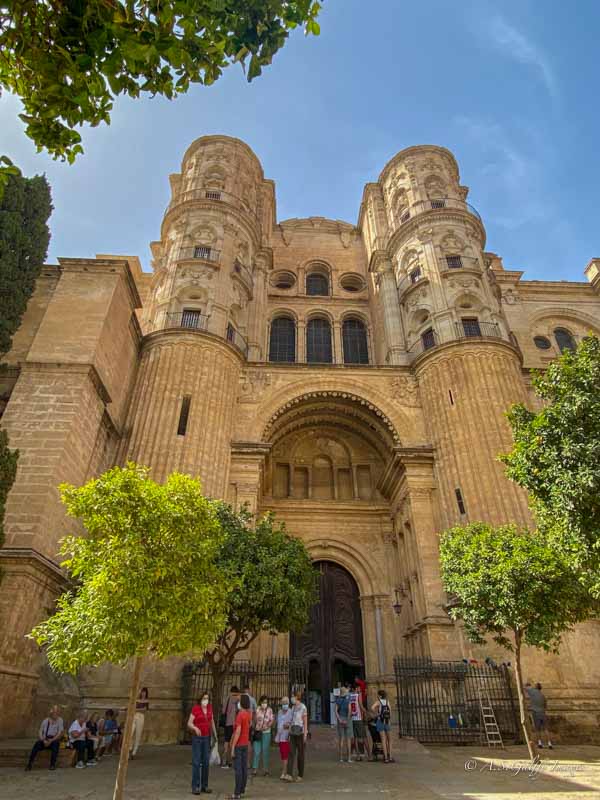
One interesting feature of the Malaga Cathedral is its roof, which has a very unusual shape when compared to other cathedrals. The roof features a series of domes which are clearly visible when you walk around the access path above them. If you wish to visit the rooftop, you can book a tour.
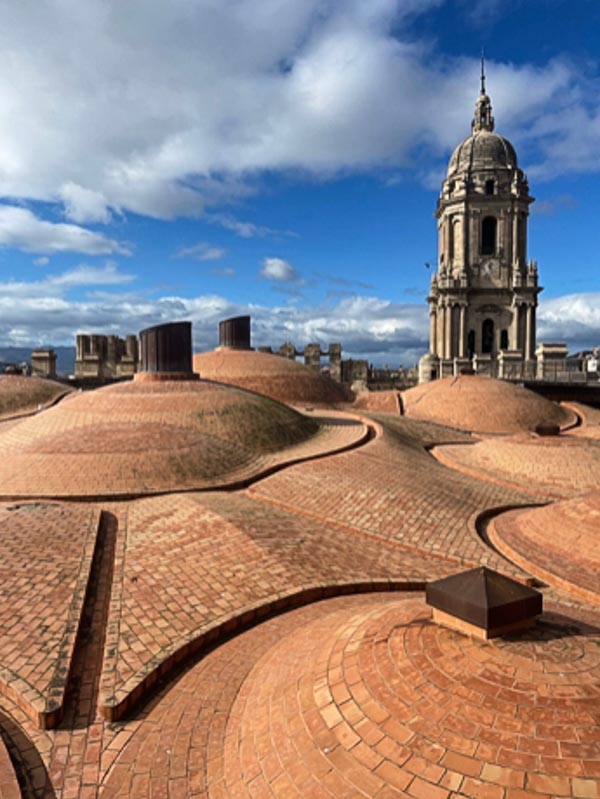
But be ready to climb about 200 steps on a narrow and winding staircase, in order to get up there. From the rooftop you’ll get great views of the city, the Alcazaba and the Castle of Gibralfaro. You’ll also get a better view of the north tower and see the columns from the unfinished south tower.
The front of the Cathedral is absolutely magnificent. Unfortunately there is not much space around it to allow you a better perspective of its grandeur.
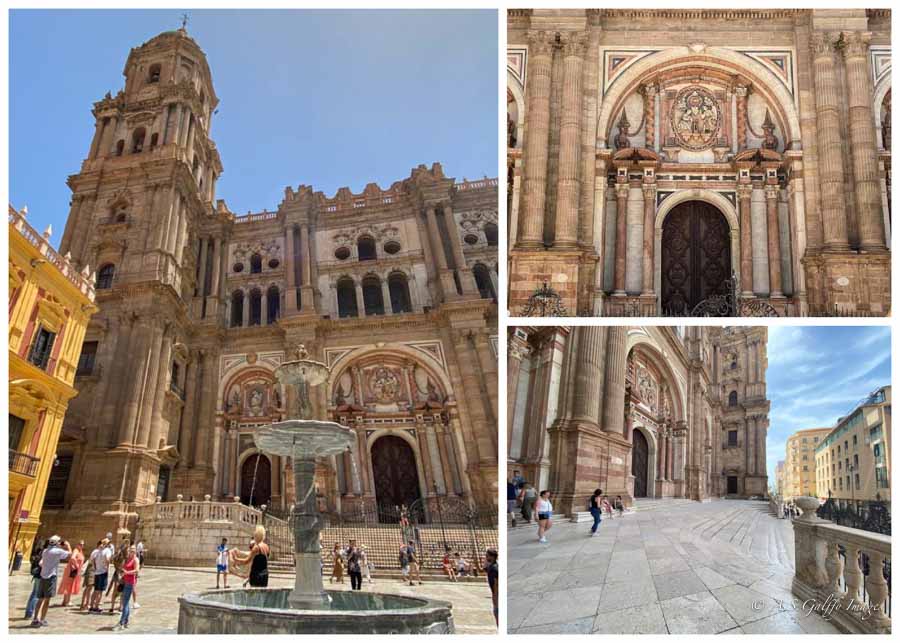
The front façade has three doorways separated by Corinthian columns of red marble. Above the main door is the Annunciation of the Blessed Virgin Mary.
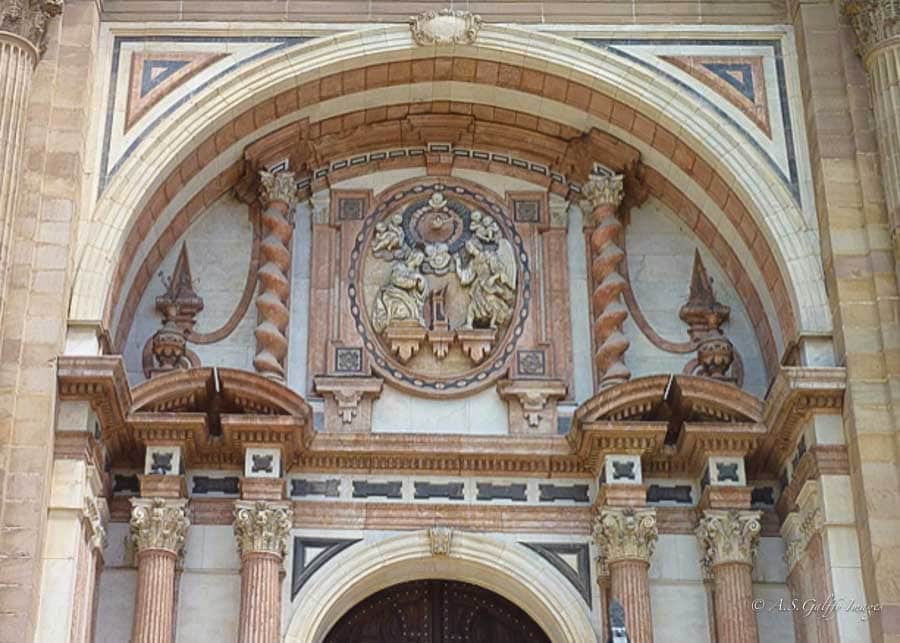
What to Look for When Visiting the Cathedral of Malaga
The first thing that catches your attention when visiting the Cathedral of Malaga is its height. The domed ceiling soars 40m into the air giving the interior a feeling of grandeur that very few other churches have. But unlike other tall cathedrals you may have seen, this one appears very bright and luminous.
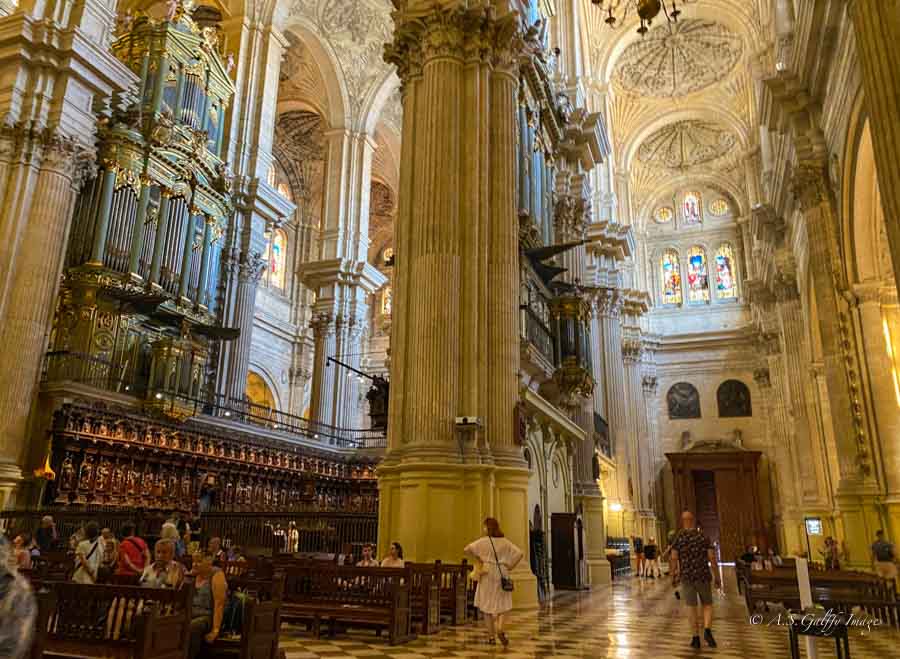
The Cathedral’s rectangular plan has a nave and two aisles. The nave is wider than the two side aisles, but they are all of the same height. This makes the Cathedral appear brighter and more spacious.
As you walk around, you’ll notice both Renaissance and Baroque influences. Some of the most remarkable elements are the choir stalls and wood carvings in the central nave, which date back to the 17th century. These were completed by the Spanish sculptor Pedro de Mena.
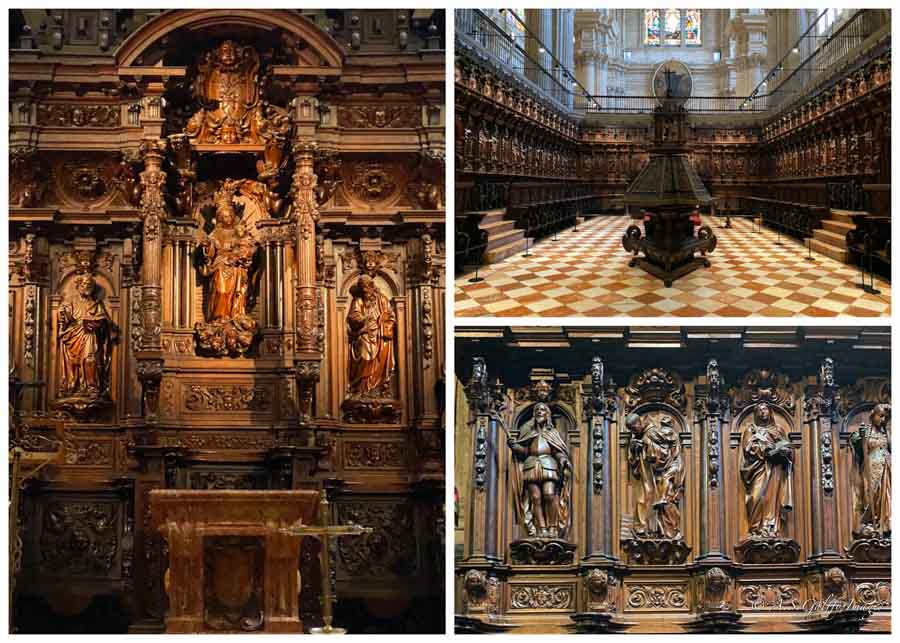
Also very interesting are the slender arches and the Corinthian columns that continue up through the ceiling. The columns feature compact headers with moldings, which are typical for the Renaissance architecture.
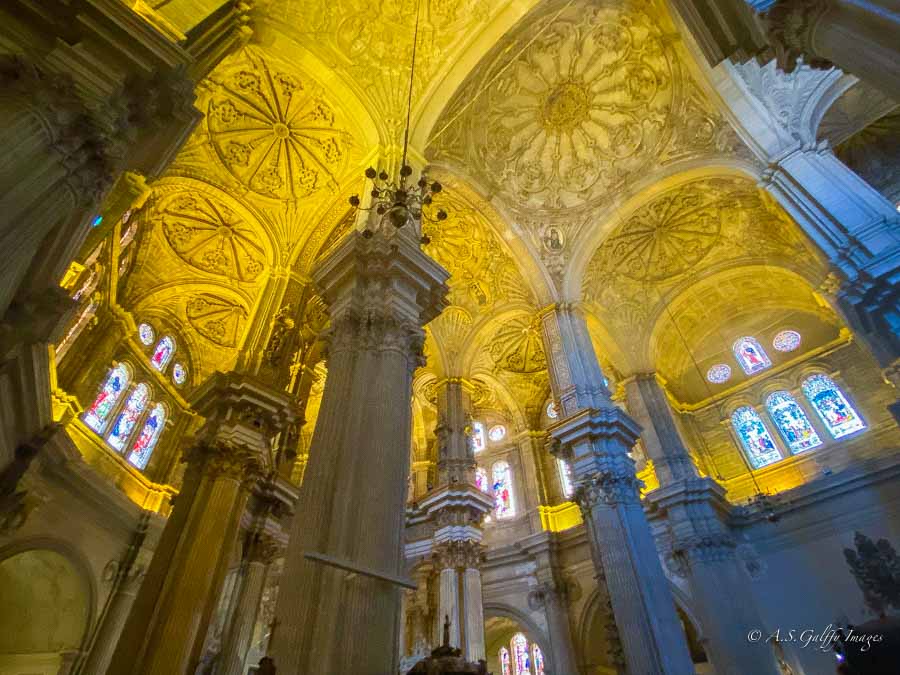
The central nave is surrounded by 15 chapels that display gorgeous religious art. One that you shouldn’t miss is the Chapel of the Incarnation (Capilla de la Encarnación) which gives the cathedral its name.
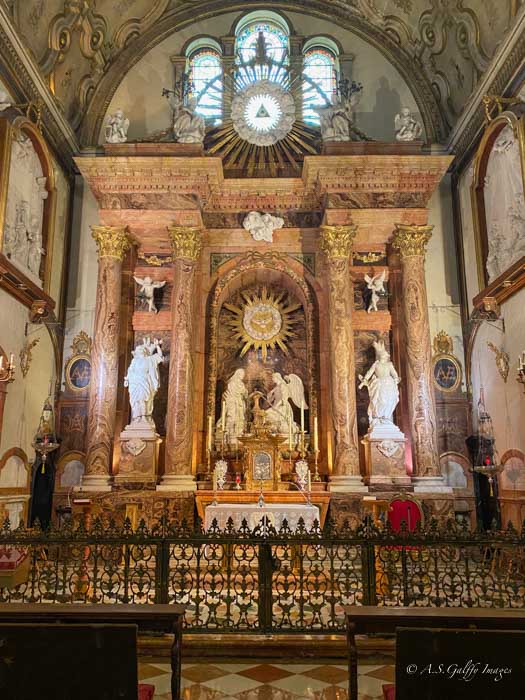
The grandiose organ you see today, which dates back to 1776, is a replacement of the old original organ. The new organ had an improved façade and was considered a masterpiece of the period.
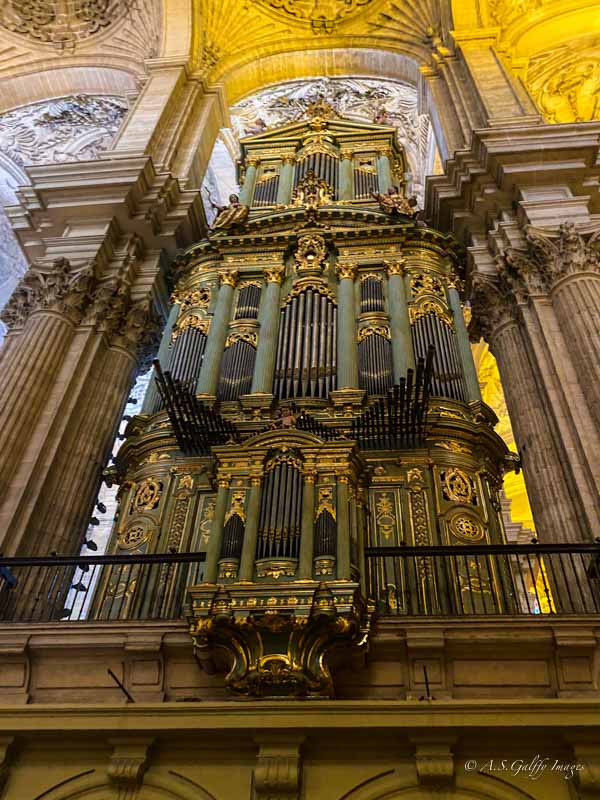
There are many other beautiful statues and religious paintings in the Cathedral that will catch your eye. Take time to admire them while walking around.
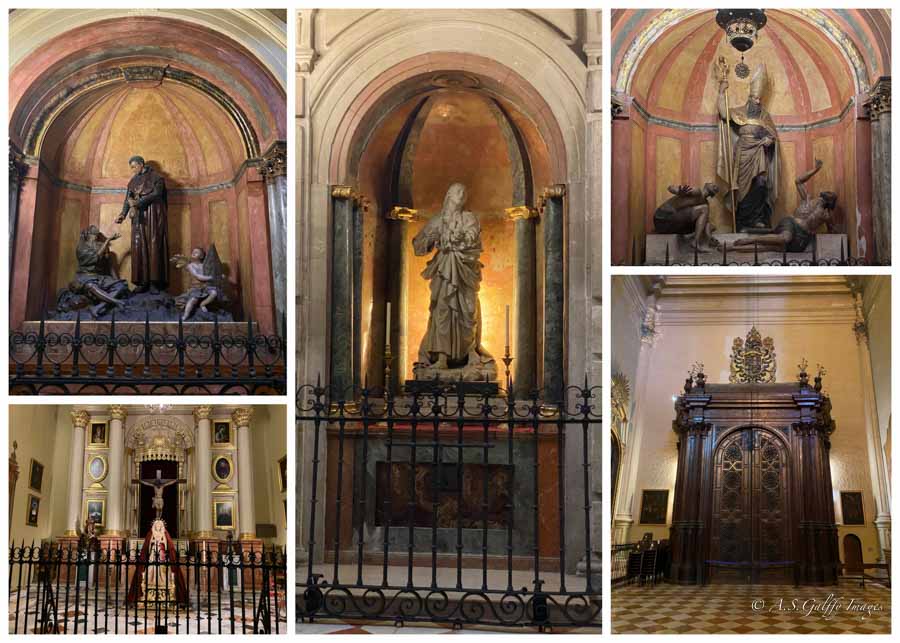
Getting to Malaga Cathedral
The Cathedral of Malaga is located in the historic centre of the town, on Molina Lario street, and it’s visible from almost every part of the city. Most people walk to the cathedral, as the historic center is almost entirely pedestrian. However, if you’re getting to the city center by bus the nearest stop is Paseo del Parque/ Plaza de la Marina.
Tickets and Hours for Visitation
Admission prices for visiting the Cathedral of Malaga are as follows:
General admission: €8 for adults and €5 for children
Cathedral & rooftop: €12 for adults and €8 for children
If you are looking for a guided tour of the Cathedral, I recommend the one below:
The hours of visitation vary by season, so for more accurate information please check the Cathedral’s website (only available in Spanish).
If you found this information useful, please pin it so that others can discover it.
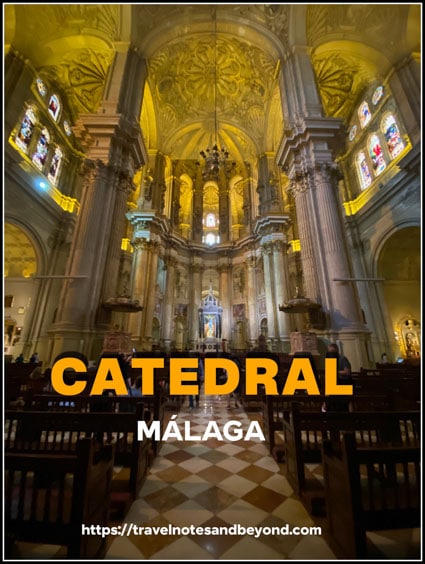
YOU MAI ALSO LIKE:
10 Day Trips from Malaga You’ll Not Easily Forget
7 Beaches in Nerja that Will Steal Your Heart
Best Things to Do in Cordoba, Spain
Is San Sebastián Worth Visiting? An Unbiased Opinion

 Best Things to Do in Cordoba, Spain – 12 Must-See Attractions
Best Things to Do in Cordoba, Spain – 12 Must-See Attractions



Cindy
Such an interesting church, but so hard to photograph the exterior! We didn’t go up on the roof (the line was so long), wish I had – It looks like it is really worth checking out the design and the view.